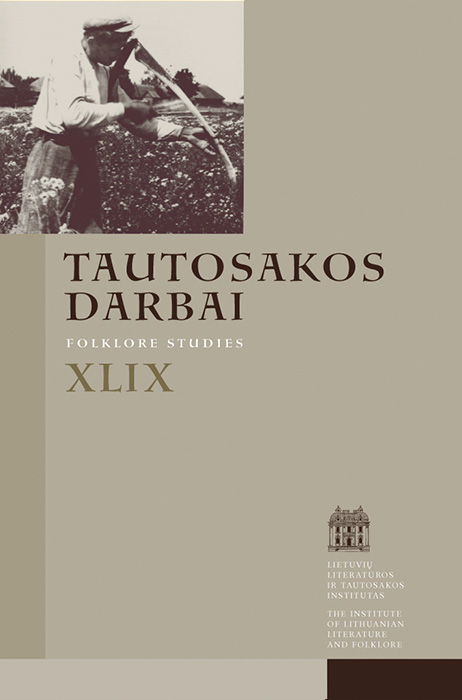Not Yet Fully Solved Riddle of the Birth of the Divine Colt (Moon)
Abstract
The riddle describing birth of the divine colt (the answer being moon), which was used by Algirdas Julius Greimas in his reconstruction of the ancient festival of midwinter – Krikštai, was afterwards repeatedly employed by authors popularizing the old Lithuanian customs. Yet it is still unclear, what the names of the weekdays, listed in the riddle (Wednesday, Saturday, and sometimes Friday) are supposed to mean. This article aims at revisiting the riddle taking into account the differences in its variants and the traditional meanings of the weekdays.
Although among eleven available variants of the riddle only one describes the colt as belonging to God, its mythopoetic image corresponds to the God’s horses depicted by the Latvian mythological songs, these being related to the heavenly sphere and sometimes – to the nocturnal orb, the moon.
One possible way of interpreting the meaning of the weekdays mentioned in the riddle rests on the assumption that rather than actualizing the individual separate points or periods of time they simply present a poetical means of expression aimed at introducing an exceptional object, related to the change in time.
Nevertheless, if the vernacular semantics of the weekdays, amply presented by the folklore data, is taken into consideration, another possibility offers itself: namely, that all the days listed in the variants of the riddle are characterized by the same peculiarity. These are the days of fasting, which, according to the vernacular beliefs, can cause undesired, unlucky future developments (this is especially true of the Wednesday and Friday). Possible correlation between the waning moon and the effect of fasting days on humans, animals and plants may be discerned. The moon is perhaps related to these days due to its inability to preserve its round shape and its rapid waning.
A third possibility, discussed in the article in some detail, relates the Wednesday (sereda) mentioned by the riddle to a particular date of the annual calendar, namely, the Ash Wednesday (Pelenų sereda). According to the comparative analysis of folklore of the Slavic and other peoples, this was the time when appearance of the new moon in the sky was anticipated. Yet another valid possibility of interpretation opens up in the context of the biblical story of creation. According to the Book of Genesis, the celestial bodies were created on the fourth day of creation, which, if paralleled to the usual structure of the week, would precisely correspond to Wednesday.
Downloads
Most read articles by the same author(s)
- Rokas Sinkevičius, The Motif of the Hero’s Clothes Sprinkled with Oak Blood in Latvian Songs and in Martynas Liudvikas Rėza’s Song “Aušrinė” , Tautosakos darbai: Vol. 67 (2024): Tautosakos darbai
- Austė Nakienė, Daiva Račiūnaitė-Vyčinienė, Rokas Sinkevičius, Aušra Žičkienė, Nijolė Laurinkienė, Rūta Žarskienė, Chronicle , Tautosakos darbai: Vol. 53 (2017)
- Rokas Sinkevičius, The Motive of Thunderstruck Tree in Connection to Wedding Customs , Tautosakos darbai: Vol. 56 (2018)
- Rokas Sinkevičius , Dangus virš Baltarusijos prabilo savais vardais , Tautosakos darbai: Vol. 51 (2016)
- Rokas Sinkevičius, Motives of Golden Boughs and Wreath in the Latvian Mythological Songs on the Sun Daughter’s Wedding , Tautosakos darbai: Vol. 60 (2020)




